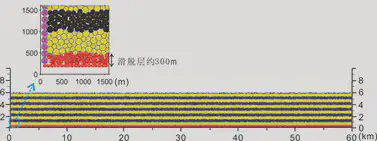2017 Annual Meeting of the Chinese Geoscience Union:The Influence of Detachment Layer Strength on Compressional Tectonics
Location:Beijing
Time:2017
Topic:Effects of Detachment Layer Strength on Compressional Structures: Insights from Discrete Element Numerical Modeling
Download:[posters](Li Changsheng 2017 The Influence of Detachment Zone Strength on Contractional Tectonics-A Discrete Element Modeling Approach-CGU posters.pdf) [Thesis](Li Changsheng 2017 The Influence of Detachment Layer Strength on Compressional Structures-A Discrete Element Numerical Simulation Study-CGU thesis.pdf) CNKI link
Discrete Element Method (DEM) numerical simulation has emerged as a pivotal approach for investigating tectonic deformation processes and mechanisms. This technique effectively overcomes the rheological and scaling limitations inherent in physical analog modeling. In contrast to continuum-based numerical methods, DEM simulates system dynamics through particle-particle interactions, enabling researchers to directly observe and quantify kinematic evolution. Its unique capacity to accommodate large interparticle displacements makes it particularly suited for modeling high-strain deformation, offering distinct advantages in addressing geological problems related to structural deformation.
Our team presented the research The Influence of Detachment Zone Strength on Compressional Tectonics: A Discrete Element Modeling Approach at the 2017 Annual Meeting of the Chinese Geoscience Union (CGU) as a [poster


Translator: Chi Yu